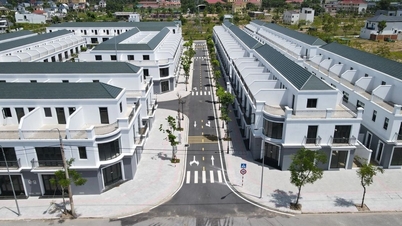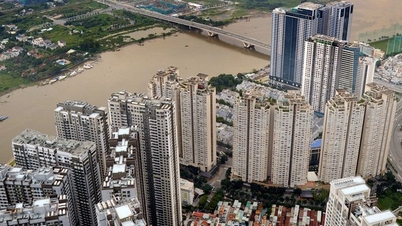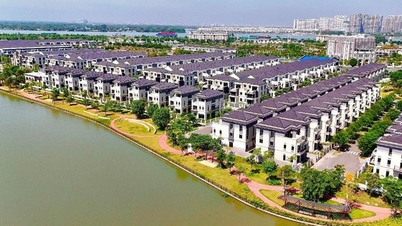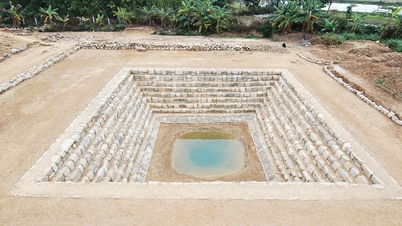
Dong Nai province is building a unified land price list to be applied throughout the province from January 1, 2026, replacing the two land price lists of the old Binh Phuoc and Dong Nai before the merger. According to the draft (expected to be submitted for approval before December 31), many areas have seen sharp increases in urban land prices in this locality, especially in the agricultural and residential land groups.
For example, in the old Binh Phuoc area, agricultural land prices increased from 1 to 1.2 times compared to present, mainly in provincial roads, densely populated areas and major traffic intersections. Residential land prices in this area also increased from 1.1 to 1.4 times depending on the area, concentrated in newly opened or urbanized roads. In the Dong Nai area before the merger, the average increase in agricultural land prices was from 1.1 to 2.2 times, urban land increased sharply from 1.6 to 9 times, rural land increased from 2.3 to 6.8 times compared to the current price list.
Similarly, the Hanoi Department of Agriculture and Environment has recently submitted a draft on the construction of the first Land Price List to be announced and applied from January 1, 2026. According to the draft, residential land prices in Hanoi are expected to increase by 2-26% compared to the current land price list.
Accordingly, the central areas of the capital located in beltways 1, 2 and 3 have a slight increase of about 2%, with the highest price reaching more than 702 million VND/m2, applied to street frontage on expensive streets such as: Ba Trieu, Dinh Tien Hoang, Hai Ba Trung, Hang Dao, Ly Thuong Kiet, Tran Hung Dao... On the contrary, suburban areas such as Me Linh, Dong Anh, Hoai Duc, An Khanh, Thanh Tri, Thuong Tin, Thanh Oai... recorded a stronger increase, ranging from 16 - 26%.
A representative of the Department of Agriculture and Environment of Ho Chi Minh City said that this unit is also requesting communes, wards, special zones, Ho Chi Minh City Tax, local tax, Ho Chi Minh City Land Registration Office and relevant agencies to urgently provide land price data for routes, planned routes and resettlement projects for synthesis, calculation and adjustment.
After having price data, the Department will send the first draft of land price list to the Vietnam Fatherland Front Committee of Ho Chi Minh City and post it on the City Information Portal to widely collect opinions from agencies, organizations and people. Then, the Department will synthesize and send it to the Land Price Appraisal Council for comments; send it to the Department of Justice for appraisal of legal documents and synthesize and report to the City People's Committee with the draft land price list to submit to the Ho Chi Minh City People's Council for consideration and approval...
Experts say: Adjusting land price tables is necessary to closely reflect market values and contribute to increasing budget revenue, but if implemented without control, the policy can unintentionally create adverse effects.
Because the adjustment of the new land price list in localities has a profound impact on many subjects. For real estate businesses, compensation costs, land use fees and site clearance will increase, pushing up the total project investment. As for people, increased land use costs can increase housing prices, affecting accessibility. From a macroeconomic perspective, there is a risk of increased credit risk and affecting investment.
Therefore, experts and related professional associations recommend that policies need to be adjusted flexibly, suitable for each region and development goals. Land price lists should serve the purpose of compensation and site clearance, not just to regulate market supply and demand.
Chairman of the Vietnam Real Estate Brokers Association, Mr. Nguyen Van Dinh analyzed: If the land price list is built with the goal of closely following the market price, while the market price is being unreasonably "inflated", the State will unintentionally recognize that the price level does not reflect the real value. At that time, the price list will become a price anchoring tool, making it difficult for the market to adjust to a reasonable level.
“Not to mention, increasing land prices also increases input costs for project development enterprises, thereby pushing up product prices and reducing people's access to housing,” Mr. Dinh recommended.
From an expert's perspective, Dr. Tran Xuan Luong - Deputy Director of the Vietnam Real Estate Market Research and Evaluation Institute, said that the current land price list with a large increase in price is not consistent with the Government's direction on controlling housing prices. In fact, land-related costs often account for 30 - 50% of real estate prices. When the price list increases, all stages from compensation, site clearance to financial obligations are also increased.
“This is like adding fuel to the fire when the management agencies are trying to stabilize the market and housing prices. It is important to synchronize policies when adjusting land price tables, especially regarding taxes, land data and valuation processes. If only increasing land prices without completing tax rates and information transparency mechanisms, it will be counterproductive and destabilize the market,” the expert said.
According to Mr. Luong, the State should temporarily not approve new land price lists, waiting until the database, valuation and land tax are completed in a synchronized manner. At that time, the adjustment will ensure closeness to the market, not cause psychological disturbance and contribute to the goal of stabilizing housing prices that the Government is pursuing.
Resolution No. 339/NQ-CP of the Government on the draft Resolution of the National Assembly stipulating a number of mechanisms and policies to remove difficulties and obstacles in organizing the implementation of the Land Law proposed applying a land price list for each type of land, area, and location to calculate land use fees, land rents, and compensation when the State reclaims land.
In particular, the Government has clearly stated the orientation: Abolish "specific land prices", switch to the mechanism of using land price tables as the basis for calculating land use fees, land rents and compensation when the State reclaims land. At the same time, build adjustment coefficients and land use fee collection rates for each type of land, each area and form of use.
Source: https://baotintuc.vn/bat-dong-san/ap-dung-bang-gia-dat-moi-tu-112026-tranh-tac-dung-nguoc-20251118084003328.htm







































![[Photo] General Secretary To Lam and National Assembly Chairman Tran Thanh Man attend the 80th Anniversary of the Traditional Day of the Vietnamese Inspection Sector](https://vphoto.vietnam.vn/thumb/1200x675/vietnam/resource/IMAGE/2025/11/17/1763356362984_a2-bnd-7940-3561-jpg.webp)






































































Comment (0)